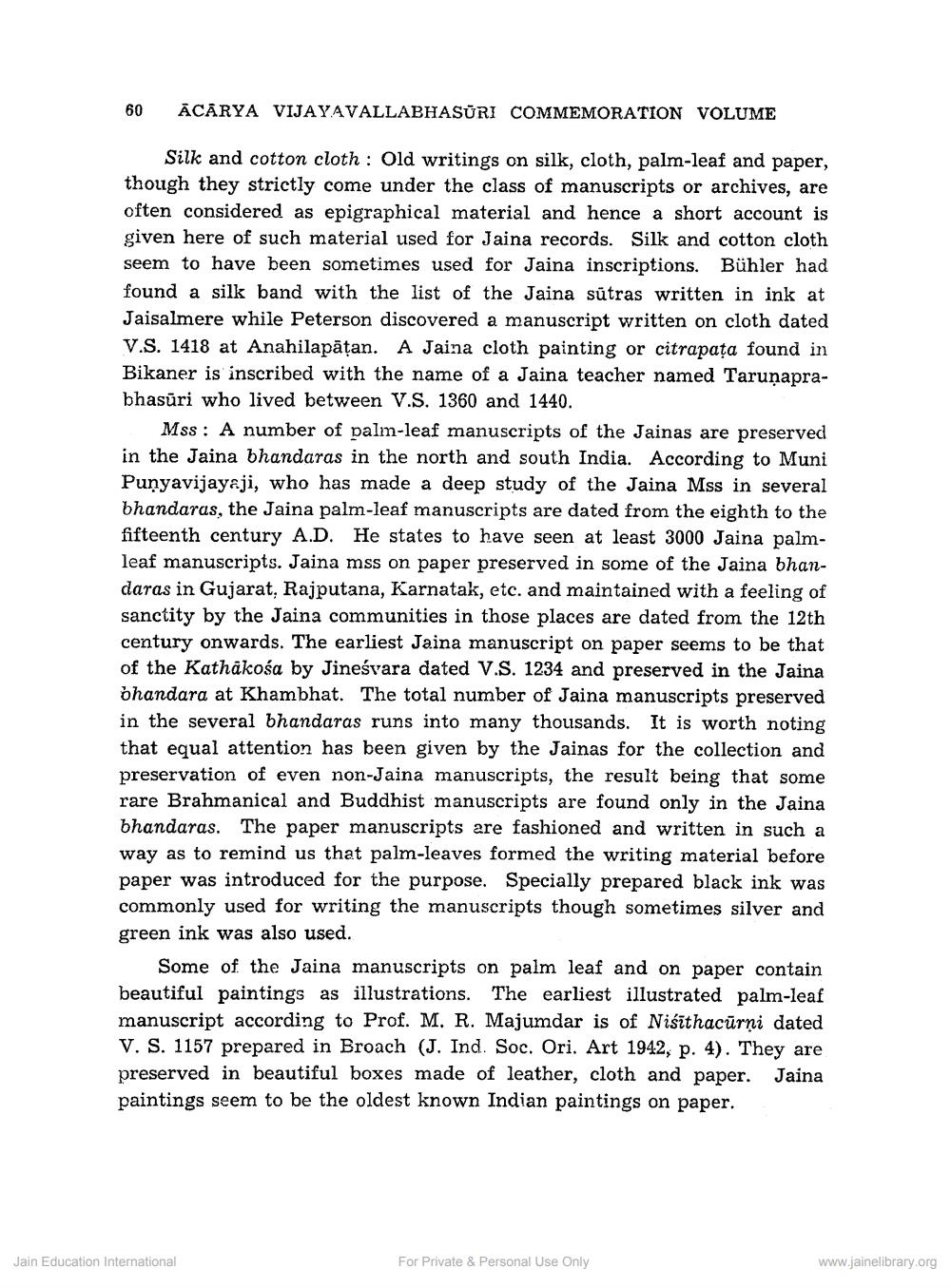Book Title: Materials Used for Jaina Inscriptions Author(s): D B Diskalkar Publisher: Z_Vijay_Vallabh_suri_Smarak_Granth_012060.pdf View full book textPage 6
________________ 60 ACARYA VIJAYAVALLABHASURI COMMEMORATION VOLUME Silk and cotton cloth : Old writings on silk, cloth, palm-leaf and paper, though they strictly come under the class of manuscripts or archives, are often considered as epigraphical material and hence a short account is given here of such material used for Jaina records. Silk and cotton cloth seem to have been sometimes used for Jaina inscriptions. Buhler had found a silk band with the list of the Jaina sutras written in ink at Jaisalmere while Peterson discovered a manuscript written on cloth dated V.S. 1418 at Anahilapatan. A Jaina cloth painting or citrapata found in Bikaner is inscribed with the name of a Jaina teacher named Tarunaprabhasuri who lived between V.S. 1360 and 1440. . Mss: A number of palm-leaf manuscripts of the Jainas are preserved in the Jaina bhandaras in the north and south India. According to Muni Punyavijayaji, who has made a deep study of the Jaina Mss in several bhandaras, the Jaina palm-leaf manuscripts are dated from the eighth to the fifteenth century A.D. He states to have seen at least 3000 Jaina palmleaf manuscripts. Jaina mss on paper preserved in some of the Jaina bhandaras in Gujarat, Rajputana, Karnatak, etc. and maintained with a feeling of sanctity by the Jaina communities in those places are dated from the 12th century onwards. The earliest Jaina manuscript on paper seems to be that of the Kathakosa by Jinesvara dated V.S. 1234 and preserved in the Jaina bhandara at Khambhat. The total number of Jaina manuscripts preserved in the several bhandaras runs into many thousands. It is worth noting that equal attention has been given by the Jainas for the collection and preservation of even non-Jaina manuscripts, the result being that some rare Brahmanical and Buddhist manuscripts are found only in the Jaina bhandaras. The paper manuscripts are fashioned and written in such a way as to remind us that palm-leaves formed the writing material before paper was introduced for the purpose. Specially prepared black ink was commonly used for writing the manuscripts though sometimes silver and green ink was also used. Some of the Jaina manuscripts on palm leaf and on paper contain beautiful paintings as illustrations. The earliest illustrated palm-leaf manuscript according to Prof. M. R. Majumdar is of Nisithacurni dated V. S. 1157 prepared in Broach (J. Ind. Soc. Ori. Art 1942, p. 4). They are preserved in beautiful boxes made of leather, cloth and paper. Jaina paintings seem to be the oldest known Indian paintings on paper. Jain Education International For Private & Personal Use Only www.jainelibrary.orgPage Navigation
1 ... 4 5 6
